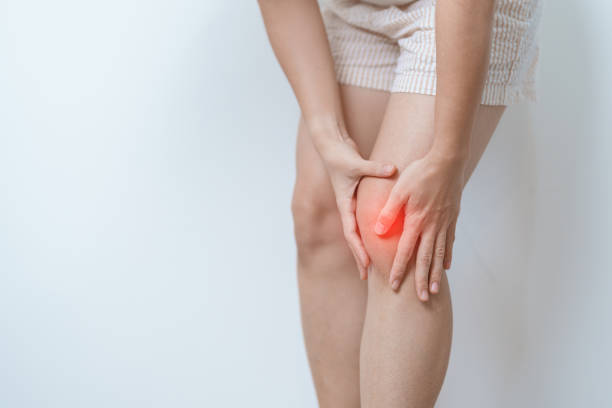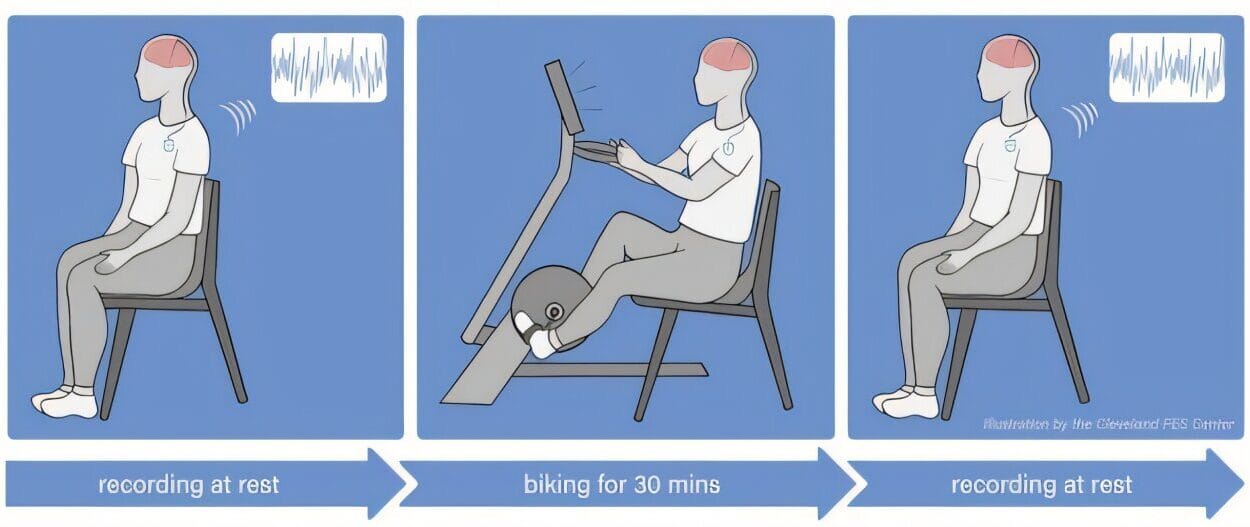Beneath the skin and behind the discomfort that marks every aching joint lies a process far older than humanity itself. Inflammation is not the villain it is often made out to be; it is, in fact, a primal biological response, a cornerstone of our immune defense. When an invading pathogen, an injury, or even chronic wear and tear threatens the body, inflammation is summoned like a battalion of microscopic warriors, ready to defend and repair.
But what happens when these fires refuse to burn out? What if the very system meant to protect us begins to misfire, overstaying its welcome or targeting the body itself? This is where inflammation transforms from hero to saboteur, a shift that underlies many chronic diseases and, prominently, the persistent agony of joint pain.
In joint disorders such as osteoarthritis and rheumatoid arthritis, inflammation is both a cause and consequence. It contributes to stiffness, swelling, and destruction within the joint, creating a vicious cycle that can leave sufferers in daily pain. To grasp this link is to peer into the mechanics of molecular warfare—a battleground hidden in plain sight.
How Joints Work When the Machinery is Smooth
To understand how inflammation disrupts joint health, one must first understand what healthy joints look like and how they function. Joints are the intersections of bones, engineered to permit motion while withstanding pressure. Synovial joints, the most mobile type in the body—like knees, shoulders, and fingers—are marvels of biological design. Within each joint, the ends of bones are covered in cartilage, a slippery cushion that reduces friction. These are encased in a synovial membrane that secretes a lubricating fluid, ensuring that bones move smoothly past each other.
Ligaments, tendons, and surrounding muscles help maintain alignment and provide stability. In a healthy state, the synovial lining is thin and silent, and the immune system, aware of its boundaries, remains a passive observer.
But when inflammation takes root, this harmony collapses. The synovial membrane thickens, the fluid composition changes, and the cartilage begins to break down. The immune system, mistaking the joint as a site of injury or invasion, pours inflammatory cells and chemicals into the space. The result is pain, swelling, and, over time, degradation.
The Double-Edged Sword of Inflammation
Inflammation is the body’s rapid-response system. The moment a threat is detected—be it bacteria, a splinter, or microscopic damage—the immune system releases signaling proteins called cytokines. These messengers summon white blood cells to the area and increase blood flow, delivering nutrients and removing debris. This acute response is usually short-lived. Once the danger is neutralized, anti-inflammatory signals restore balance and begin the repair process.
But when inflammation becomes chronic, the script changes. Instead of healing, it becomes self-perpetuating. The immune system keeps firing even when there’s no target left to eliminate. In the joints, this leads to tissue damage, pain, and loss of function.
Two common conditions illustrate this dynamic. Osteoarthritis, once considered merely “wear and tear,” now appears to involve low-grade inflammation that accelerates joint breakdown. Rheumatoid arthritis, by contrast, is an autoimmune disorder where inflammation is the central actor, with the body’s own immune system attacking joint linings as if they were foreign invaders.
The Molecular Messengers That Fuel the Flame
At the heart of joint inflammation are a chorus of molecular signals—cytokines, chemokines, prostaglandins, and enzymes—that orchestrate the immune response. In rheumatoid arthritis, tumor necrosis factor-alpha (TNF-α) and interleukin-6 (IL-6) play leading roles. They increase the permeability of blood vessels, draw in immune cells, and stimulate the production of matrix metalloproteinases, enzymes that break down cartilage and bone.
In osteoarthritis, while the inflammation is more subtle, it still involves interleukin-1 beta (IL-1β) and TNF-α, which contribute to cartilage degradation and pain sensitivity. The synovial membrane, which should remain quiet, becomes inflamed and begins to secrete harmful substances that damage the cartilage it was meant to protect.
The role of immune cells is equally crucial. Macrophages, neutrophils, and T cells infiltrate the synovial space, releasing toxic compounds like reactive oxygen species and nitric oxide, further escalating joint destruction. Even resident joint cells, such as chondrocytes, begin behaving abnormally under the influence of inflammatory mediators.
Pain as a Byproduct of the Immune Alarm System
One of the most distressing symptoms of joint inflammation is pain, which often becomes chronic. But pain is not merely the result of physical damage. Inflammation actively sensitizes nerves, altering the threshold at which pain is felt. Pro-inflammatory cytokines such as IL-1β and TNF-α enhance the sensitivity of nociceptors—the nerve endings that detect painful stimuli. This means that even light pressure or normal movement can provoke a pain response.
In chronic inflammation, changes can also occur in the central nervous system. This phenomenon, called central sensitization, amplifies pain signals in the spinal cord and brain, making the experience of pain more intense and persistent. It explains why people with chronic joint conditions may feel pain even when imaging shows only mild damage.
Thus, pain is not just a symptom of joint deterioration; it is a dynamic interaction between immune responses, nerve signaling, and the brain’s perception.
The Role of the Gut and Systemic Inflammation
In recent years, scientists have begun to explore how inflammation in the joints may be influenced by seemingly unrelated systems—chief among them, the gut. The human gastrointestinal tract is home to trillions of microbes, collectively known as the gut microbiome. These microbes play a crucial role in immune regulation. When the microbiome is disturbed—a condition known as dysbiosis—it can lead to systemic inflammation that affects distant tissues, including the joints.
Studies have found that people with rheumatoid arthritis often have altered gut microbiomes, with increased levels of certain bacteria that can promote inflammation. This has raised the possibility that the origins of joint pain may not always reside in the joints themselves, but in an invisible ecosystem within the body.
Moreover, a condition known as leaky gut, in which the intestinal barrier becomes permeable, allows bacterial components to enter the bloodstream. These can trigger immune responses elsewhere in the body, including the synovial joints, effectively linking digestive health to joint inflammation.
Obesity as an Inflammatory Engine
It’s often assumed that obesity contributes to joint pain simply by adding mechanical stress, particularly in weight-bearing joints like the knees and hips. But this view tells only half the story. Fat tissue is not inert padding; it is metabolically active and secretes a host of inflammatory molecules known as adipokines. These compounds, including leptin, resistin, and adiponectin, can influence immune cell behavior and amplify inflammation.
In obese individuals, the elevated levels of adipokines can create a state of chronic low-grade inflammation throughout the body. This systemic inflammation, in turn, can aggravate existing joint conditions or accelerate their development. Even in non-weight-bearing joints, such as those in the hands, obesity has been linked to increased risk of arthritis—further evidence that inflammation, not just load, is the key culprit.
How Aging Changes the Inflammatory Landscape
Aging is the greatest risk factor for many types of joint pain, and it brings with it a slow but steady increase in inflammatory activity. This phenomenon, sometimes referred to as “inflammaging,” describes the gradual rise in pro-inflammatory signals that occurs with age, even in the absence of disease.
As the immune system ages, it becomes dysregulated. It may respond less efficiently to infections but becomes hyperreactive in other contexts. Damaged cells accumulate and release inflammatory signals, and regulatory mechanisms become less effective. This chronic, smoldering inflammation contributes to cartilage degradation, impairs tissue repair, and increases the risk of autoimmune activation.
Aging cartilage also becomes less resilient. The chondrocytes within it produce fewer protective molecules and more inflammatory ones. Combined with the systemic shifts in immune activity, this creates an environment ripe for joint degeneration and persistent pain.
Genetics and the Inflammatory Blueprint
Not everyone experiences joint inflammation in the same way. Some people remain spry into old age, while others battle arthritis by middle age. Genetics plays a significant role in determining susceptibility to joint diseases and the nature of inflammatory responses.
In rheumatoid arthritis, certain genes related to immune function—such as HLA-DRB1—are strongly associated with disease risk. These genes influence how the immune system recognizes self from non-self, and variations can predispose individuals to autoimmunity.
In osteoarthritis, genetic factors related to cartilage structure, inflammatory signaling, and pain perception contribute to the disease’s onset and progression. While genes are not destiny, they shape the battlefield on which inflammation plays out.
Lifestyle Choices That Influence Inflammatory Balance
The choices we make daily—what we eat, how we move, how well we sleep—can tilt the balance between inflammation and health. A sedentary lifestyle reduces circulation and promotes stiffness, while regular moderate exercise stimulates anti-inflammatory effects, boosts joint lubrication, and strengthens the muscles that support joint stability.
Diet is another powerful lever. Foods rich in sugar, refined carbohydrates, and trans fats can promote inflammatory responses, while anti-inflammatory diets emphasizing omega-3 fatty acids, colorful fruits and vegetables, whole grains, and spices like turmeric may help dampen inflammation.
Even sleep plays a crucial role. Chronic sleep deprivation has been shown to elevate pro-inflammatory cytokines, increasing the perception of pain and interfering with healing processes. The mind matters too—stress triggers the release of cortisol and other hormones that, in prolonged doses, can dysregulate immune function and promote inflammation.
Modern Medicine and the Battle Against Joint Inflammation
The understanding that inflammation is central to joint pain has revolutionized treatment strategies. Nonsteroidal anti-inflammatory drugs (NSAIDs), corticosteroids, and disease-modifying antirheumatic drugs (DMARDs) remain mainstays in the arsenal against inflammation. In rheumatoid arthritis, targeted biologic therapies such as TNF inhibitors, IL-6 blockers, and JAK inhibitors have changed the prognosis dramatically.
These biologics do not merely mask symptoms; they aim to interrupt the inflammatory pathways at the molecular level. By blocking specific cytokines or cell receptors, they can reduce joint damage and improve quality of life.
However, these treatments are not without risk. Suppressing the immune system can increase vulnerability to infections. Precision medicine—tailoring treatment to an individual’s genetic, molecular, and lifestyle profile—may offer safer, more effective approaches in the future.
The Promise of Regenerative Approaches
Beyond suppression, some researchers are exploring regeneration. Stem cell therapies, platelet-rich plasma injections, and tissue engineering aim not just to reduce inflammation, but to restore damaged cartilage and synovial tissue. While still in the experimental stages for many conditions, these therapies hold hope for a future where joint pain is not just managed, but reversed.
Another frontier is the microbiome. Probiotics, prebiotics, and dietary interventions that restore microbial balance may one day offer a novel way to modulate immune responses and reduce inflammation from the gut outward.
A Future Less Burdened by Pain
Inflammation is the language through which the immune system communicates. When spoken in the right context, it heals. When misused or misunderstood, it harms. In the case of joint pain, inflammation is both the signal and the substance of suffering.
But this understanding is not a verdict—it is a key. By decoding the inflammatory processes that drive joint disease, researchers and clinicians are unlocking new ways to treat, prevent, and possibly cure these conditions. What was once thought to be an inevitable part of aging or a mystery of autoimmunity is now a solvable puzzle.
And for the millions who wake each morning with stiff knees, swollen fingers, or aching hips, that knowledge is more than scientific progress—it is a light on the horizon, a reason to hope that movement, once lost, can be found again.






